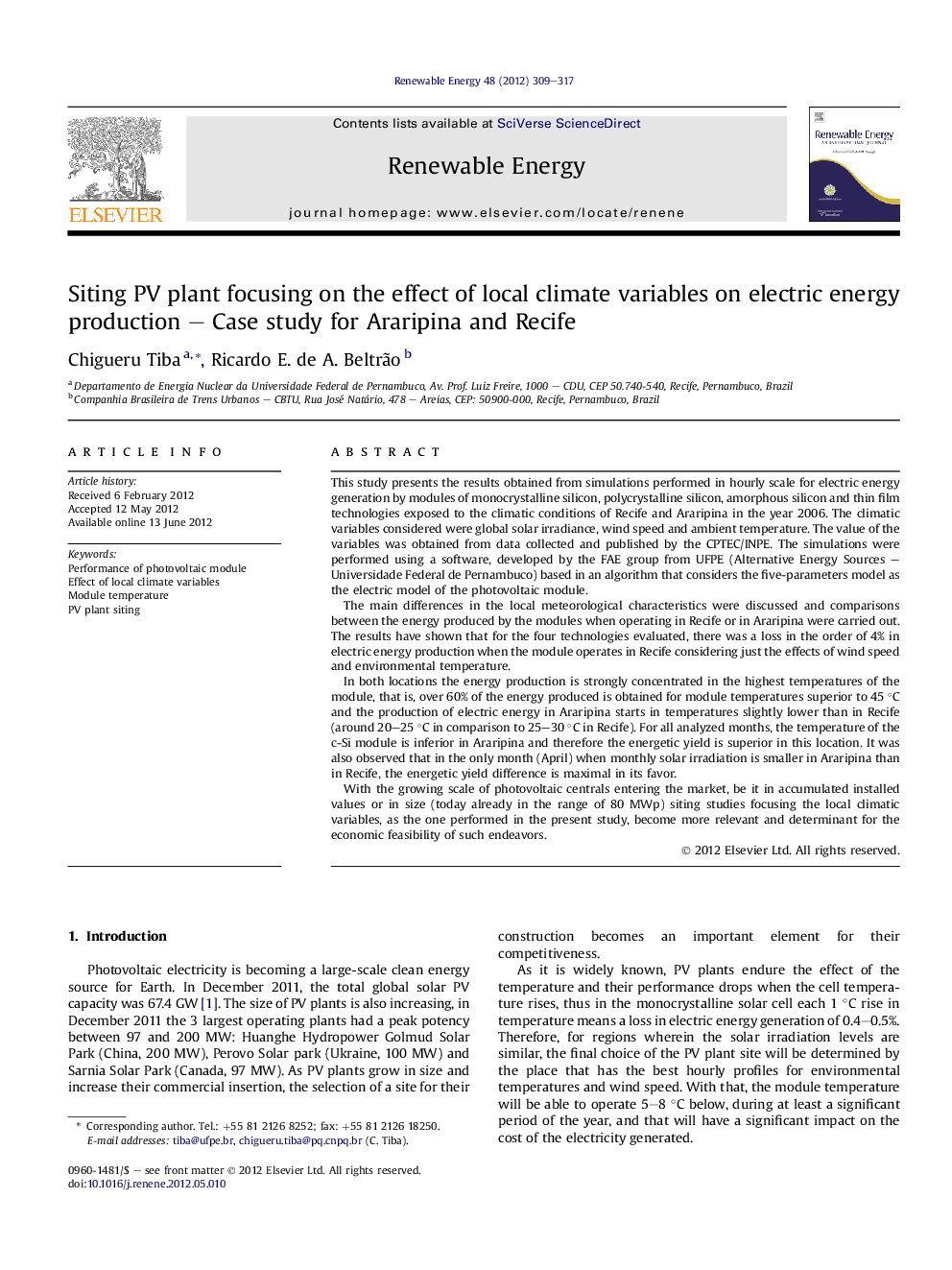| Article ID | Journal | Published Year | Pages | File Type |
|---|---|---|---|---|
| 300883 | Renewable Energy | 2012 | 9 Pages |
This study presents the results obtained from simulations performed in hourly scale for electric energy generation by modules of monocrystalline silicon, polycrystalline silicon, amorphous silicon and thin film technologies exposed to the climatic conditions of Recife and Araripina in the year 2006. The climatic variables considered were global solar irradiance, wind speed and ambient temperature. The value of the variables was obtained from data collected and published by the CPTEC/INPE. The simulations were performed using a software, developed by the FAE group from UFPE (Alternative Energy Sources – Universidade Federal de Pernambuco) based in an algorithm that considers the five-parameters model as the electric model of the photovoltaic module.The main differences in the local meteorological characteristics were discussed and comparisons between the energy produced by the modules when operating in Recife or in Araripina were carried out. The results have shown that for the four technologies evaluated, there was a loss in the order of 4% in electric energy production when the module operates in Recife considering just the effects of wind speed and environmental temperature.In both locations the energy production is strongly concentrated in the highest temperatures of the module, that is, over 60% of the energy produced is obtained for module temperatures superior to 45 °C and the production of electric energy in Araripina starts in temperatures slightly lower than in Recife (around 20–25 °C in comparison to 25–30 °C in Recife). For all analyzed months, the temperature of the c-Si module is inferior in Araripina and therefore the energetic yield is superior in this location. It was also observed that in the only month (April) when monthly solar irradiation is smaller in Araripina than in Recife, the energetic yield difference is maximal in its favor.With the growing scale of photovoltaic centrals entering the market, be it in accumulated installed values or in size (today already in the range of 80 MWp) siting studies focusing the local climatic variables, as the one performed in the present study, become more relevant and determinant for the economic feasibility of such endeavors.
► PV siting studies focusing the effect of local climate was performed. ► Considering the effects of wind and temperature there was a difference of 4%. ► Four PV technologies were evaluated: c-Si, p-Si, a-Si and thin film. ► The energy production is concentrated (60%) in module temperature >45 ºC. ► The production of electricity in Araripina starts 5°C < Recife.
